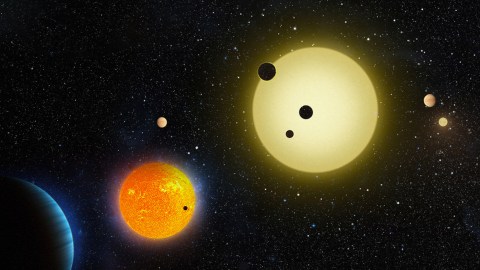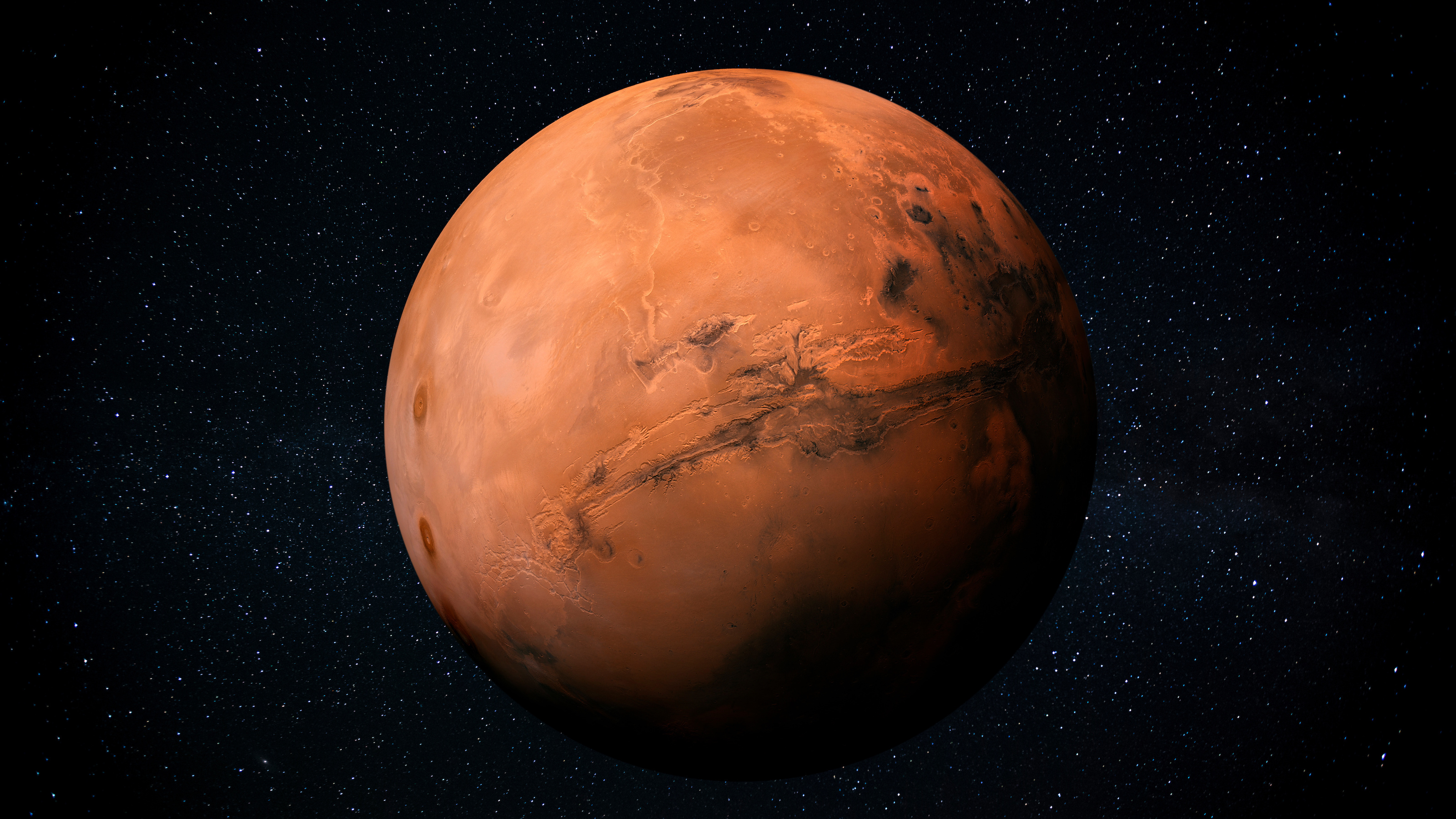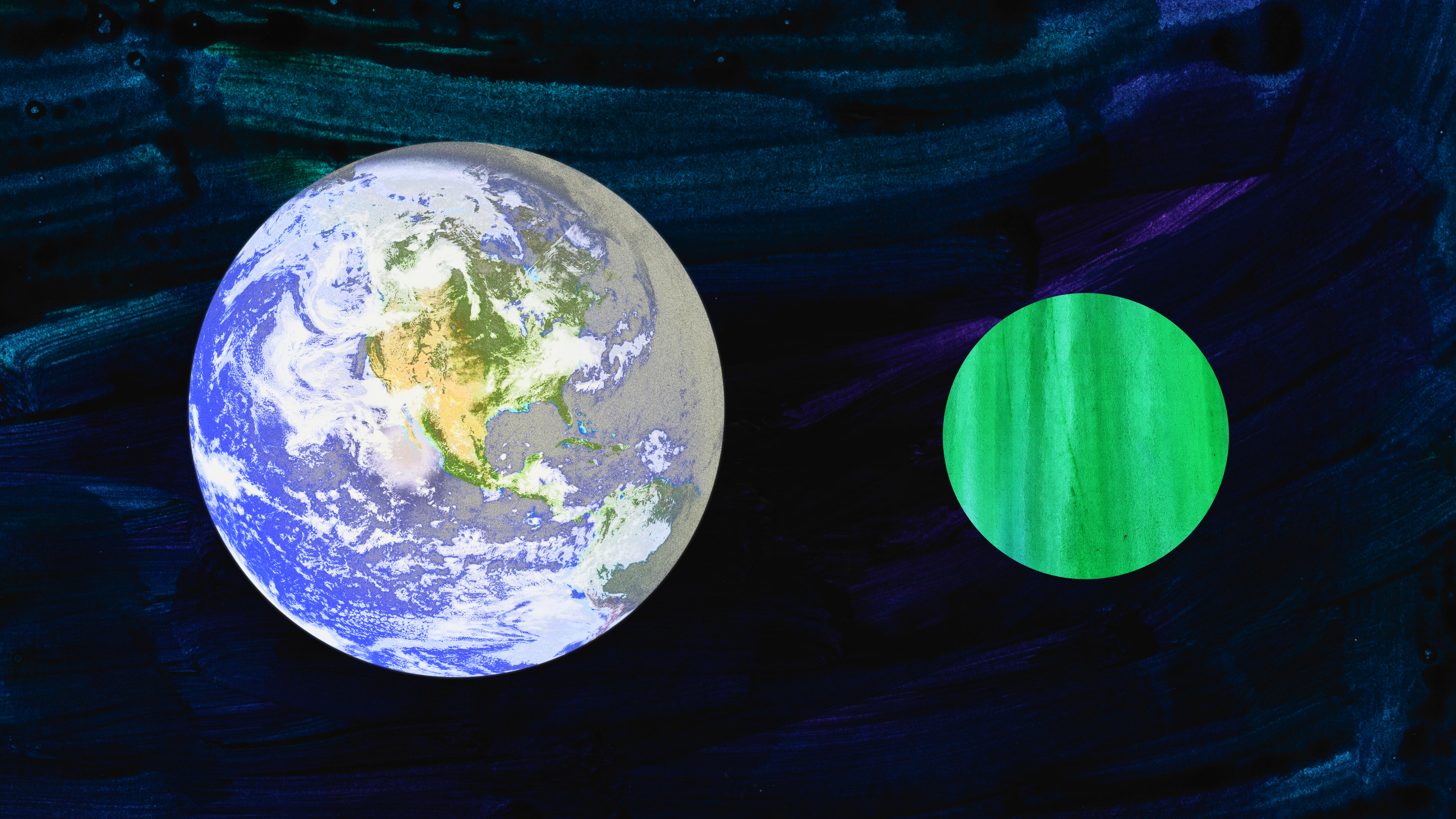To find a new world, watch how a planet dances with its star

- We are living in a remarkable time, in which we can discover worlds orbiting far away stars.
- There are two dominant methods, the radial-velocity (Doppler) method being the first widely successful one, and the transit method.
- The early discoveries with the Doppler method forced us to rethink what we knew about other stars with planets, raising the question of how common or rare is our own Solar System.
We are witnessing a revolution in our knowledge of other worlds, planets orbiting stars far away from our Solar System. Once the stuff of imagination and speculative fiction, we now can state with confidence that most stars have planets orbiting them. That we can do this is no small feat: Finding a tiny planet around bright stars dozens or hundreds of light-years from Earth is extremely difficult.
Planet hunting
Planets don’t shine, of course, and are overwhelmed by their star’s brightness. So, the techniques to hunt for exoplanets rely on indirect methods. Because planets affect the stars they orbit, we can look for those effects to find them.
First, planets tug at stars gravitationally, making them wobble; second, a planet blocks a tiny fraction of the star’s light when passing in front of it. The bigger the planet and the closer it is to its star, the larger these effects are. To measure a star’s wobble, we use the the radial-velocity or Doppler method, and to measure the dimming of its light, we use the transit method. We then work backward to deduce the kinds of planets that could cause such effects on their host stars.
These indirect imaging techniques require incredible precision and care. But they work phenomenally well. To date, we have confirmed observations of more than 5,500 exoplanets, each with its own properties, an amazing diversity of worlds. In my recent book, I give more details about this extraordinary new window into these other worlds. Today, I’ll focus on one of the two most popular techniques, the radial-velocity method, as it was the first to be wildly successful in our search for exoplanets.
Dancing with the stars
As a planet orbits its star, the star wobbles ever so slightly due to the gravitational tug from the planet. The radial-velocity (Doppler) method detects this. Since the more massive the planet the stronger the tug, this technique tends to favor finding stars with big planets with nearby orbits.
The important concept here is the center of mass. If two bodies have the same mass, the center of mass of this two-body system is exactly at the midpoint between the two. Someone sitting at this midpoint won’t feel pulled in either direction, since the equal and opposite pulls cancel each other. If the two bodies spin around each other, they will spin about this midpoint.
This changes if the bodies don’t have equal mass. The center of mass is closer to the more massive body. When one body is much more massive than the other, like a star and a planet, the center of mass is almost at the center of the more massive body — but not quite. For example, the center of mass of the Sun-Jupiter system (forgetting the other planets) is at one-thousandth of the Sun-Jupiter distance, just outside the solar surface.
What astronomers observe is not the wobbling itself but variations in the starlight shining in our direction due to the star’s wobbling, which is caused by the Doppler shift, the variation in light’s frequency due to motion of the source or the observer. Think of how an ambulance siren changes as it approaches you and then goes away from you; that’s a result of the Doppler effect. Similarly, when the star approaches us, its light shifts slightly toward the blue (higher frequency) end of the spectrum, and when it moves away from us, its light shifts slightly toward the red (lower frequency) end of the spectrum. When it falls within detection range, this alternating dance of light allows astronomers to detect the planets causing their host star to wobble.
Finding Dimidium
The first exoplanet detected using the Doppler method was discovered in 1995 orbiting the star 51 Pegasi, a G-type star like our Sun orbiting 50.6 light-years away. The discovery earned Swiss astronomers Michel Mayor and Didier Queloz the 2019 Nobel Prize in Physics. (The third winner that year was James Peebles, a pioneering theoretical cosmologist from Princeton University who influenced a whole generation.) The planet, now called Dimidium, is a “hot Jupiter” orbiting its star every 4.2 days. This means the giant planet is very close to its host star, making it very hot — hence the name hot Jupiter. Compare that to our Jupiter, which takes 12 years to orbit the Sun — or even Mercury, which takes three months.
This discovery caused tremendous excitement in the astronomical community, not only for being the first exoplanet found using the Doppler method, but for forcing us to rethink what planetary systems look like. No one would have guessed that gas giant planets could orbit this close to their host stars.
The lesson here is clear: We must be very careful using inductive thinking when trying to generalize properties of stars and their orbiting planets. The fact that our Solar System has the opposite structure, with giant gas planets orbiting the farthest from the Sun, shows the incredible diversity of planetary systems spread around our galaxy and, surely, all galaxies across the Universe.
A question that follows, then, is whether there are very stringent conditions for a planetary system to have planets with life. Surely, Dimidium is a dead world. How common, then, is our Solar System among billions of others? Estimates from 2010 indicate that around 10% of planetary systems are arranged like ours, with gas giants far from their host stars.
Still, we need more data to determine how odd our Solar System is. Current estimates place it as the rarest kind of planetary system in the galaxy, but it’s still early to quantify how rare. Further studying the architecture of planetary systems will reveal secrets of whether we are the odd system with heavy gas giants on the outside and life on one of the rocky planets on the inside.





